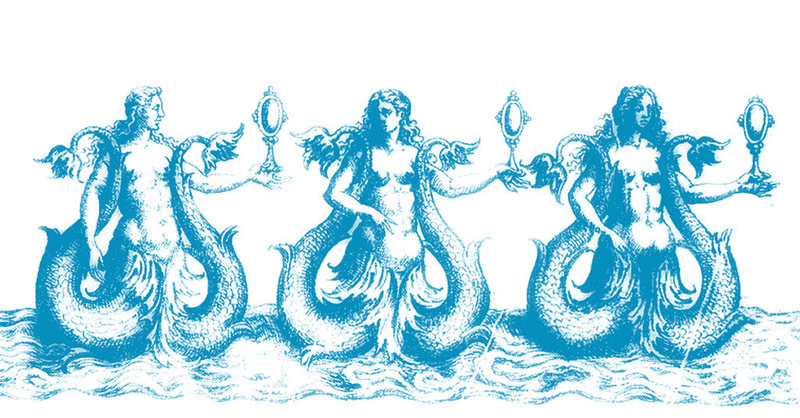At the 2010 Masters, Phil Mickelson famously saw a shot few, if any, would have.
From the pine straw right of the par-5 13th fairway, Lefty had 187 yards to carry the creek for his second shot. That he also had to weave that attempt through a pair of pine trees only added to the degree of difficulty.
History shows that Mickelson hit that shot to 3 feet and went on to win his third green jacket, but on Wednesday at Augusta National Jim “Bones” Mackay, Mickelson’s former caddie, who is now an NBC Sports/Golf Channel analyst, shed some light on those intriguing few moments.
“Phil let me know almost right away, ‘I’m going [for the green] here. When the green clears in front of us I’m going,’” Mackay said. “The gap between the trees, TV didn’t do it justice. It was about the width of a box of a dozen balls I would say.”
Mickelson and Mackay settled on a 6-iron, but as they waited Bones discovered that K.J. Choi, who was playing in the group ahead, had just bogeyed the 13th hole to fall two strokes behind Lefty.
This changed things, at least in Mackay’s mind.
“I went back in to Phil and said to him, ‘Hey, let me throw this at you. You’re the boss, but does this change the way you’re going to approach this shot given the fact that you are tied for the lead now?’” Mackay said.
Mickelson’s response was quintessential Lefty.
“He looked at me and said, ‘Let me tell you something. If I am going to win this tournament today, I am going to have to hit a really good shot under a lot of pressure at some point. I am going to do it right now,’” Mackay recalled. “That was my entrée to get out of the way and watch him do his thing. And he hit arguably the greatest shot of his career.”
From " Mackay: Phil’s shot in '10 more epic than you know ", by Rex Hoggard, 2018
“Extra, extra, read all about it!” In the old days, newspapers would release “Extra’s” when there was a big news story. This, for sure, is an extra.
The other day, I joked that I was writing basically the same articles day in and day out in an effort to drive my adversaries from the field with boredom.
Well, this article came out of my recent new thrust into longevity research, and it’s definitely not boring.
From my perspective, it’s really groundbreaking stuff.
Remember, the word “Occult” means “hidden”.
Regardless of national boundary, the folks in charge are all from the same bloodline. As any middle schooler knows;
Aug 5, 2010 - 12-Year-Old Discovers All U.S. Presidents Are Direct Descendants of King John Of England.
They’re not even secretive about it:
"King Richard was fond of telling a tale that he was a descendant of a countess of Anjou who was in fact the fairy Melusine, concluding that his whole family “came from the devil and would return to the devil.”
That’s from an article I’ve appended below.
The gatekeepers on the What To Think disinformation websites call the bloodline we’re discussing the “Serpent” bloodline. That’s the meme that’s been used to cover the “Salamander” bloodline, all the way back.
The programming surrounding the subject is so dense that, as I first went to type the title of the article at the top, I wrote " Serpent Bloodline ", so conditioned have I become to the ruse that hides the truth.
The words " mystery ", " baffled " and " puzzled " are memes, used, among numerous similar variants, whenever anyone in the wholly-controlled-and-coopted Political, Academic, Scientific and Media establishments wants to lie about, well, basically anything.
That’s why an article that I’ve appended below, from 2018, headlined “Creepy 'Human Fish ’ Can Live 100 Years”, reads “The olm, a foot-long salamander nicknamed “the human fish” because of its fleshy skin and tubular shape, is certainly a strange-looking animal. But beneath the surface, they’re even weirder: Olms can live for 100 years, far longer than any other amphibian. Scientists have no idea why .”
The author used the word " fish " in the headline of an article about a salamander. I mean, how much more blatant do you want it?
I sourced the article while researching longevity. When you see " Scientists have no idea why ", it’s a flashing neon sign that says “the scientific establishment definitely doesn’t want you to know why .”
Olms are found in caves in Croatia and Slovenia. In contrast to most amphibians, they are entirely aquatic.
The olm lives twice as long as any other amphibian. The establishment theory as to why that’s the case uses a " mystery, baffled " variant:
“The olm presents a paradox ,” wrote the researchers. “Neither its basal metabolic rate nor its antioxidant activity, the two most cited mechanisms that should be involved in enhancing lifespan, differ from species with a more reduced lifespan.”.
Clearly, the olm lives twice as long as any other amphibian because it’s a human-salamander hybrid . The author has carefully called it a 'Human Fish ’ in the headline, to not trigger the human-salamander realization.
Let’s take a look at the second-longest lived - and as a bonus person-sized - giant Japanese salamander:
“The next-longest-lived amphibian, the 50-pound Japanese salamander, which clocks in with a 55-year lifespan.”
October 11, 2013 - Absurd Creature of the Week: The Human-Sized Salamander That Smells Like Pepper
It smells like pepper , it’s astonishingly quick, and it makes noises that sound a bit like a child."
Can you see how they led with " smells like pepper " in the headline? That’s “chaff”, to distract you. Then they repeated it again, below, putting it first. They went through those gymnastics to avoid saying “The human-sized salamander that cries like a human child.”
They hedged again by saying it makes " noises " that “sound a bit like a child.” The word " absurd " is a meme.
The human-sized, human-voiced giant Japanese salamander is, clearly, another human-salamander hybrid.
It’s interesting to note that the olm and the giant Japanese salamander are both exclusively aquatic.
“It was first mentioned in 1689 by the local naturalist Valvasor in his Glory of the Duchy of Carniola, who reported that, after heavy rains, the olms were washed up from the underground waters and were believed by local people to be a cave dragon’s offspring .”
That brought to my mind Grendel’s mother, from Beowulf:
[image]
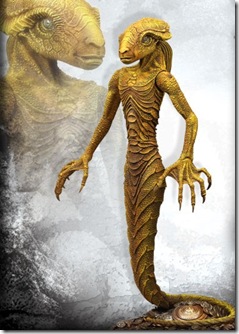 [image]
[image]
(Various depictions of Grendel’s mother, from Beowulf)
“Beowfulf”, you know, which we were all inexplicably made to read in middle school? Before we could get any idea of how twisted it was?
In the film featuring Anglina Jolie, they falsely play that it’s Grendel’s mother’s long braid - versus the truth, that it’s her salamander tail. That’s because human-salamander hybrids are a subject that it is forbidden to openly discuss.
Salamander-human hybrids:
The olm “also exhibits neoteny, retaining larval characteristics like external gills into adulthood ,[7] like some American amphibians, the axolotl and the mudpuppies (Necturus). The olm is the only species in the genus Proteus and the only European species of the family Proteidae, whose other extant genus is Necturus.”
The only species in the genus. That’s pretty remarkable.
Salamander-human hybrids:
January 19, 2006 - Human Ears Evolved from Ancient Fish Gills"
Where, again, " fish" is used as a misdirection, in substitution for “salamander”. They pile on by saying " ancient ", to imply it was “the evolution of the species.” Versus the truth, that it was an horrific, monstrous exercise in cross-breeding, of which pigs are another example.
A current news story that I’ve appended below is headlined "Human gills - Is it true that humans have occasionally been born with gills ?"
It reads:
No , humans have never been born with gills. Without a major controlled change in the human DNA-structure, it is simply an impossibility. Yet, newspapers have reported supposed human gills. What is the source of this confusion ?
“BOY HAD FISH GILLS IN HIS NECK”
This headline was not that of some cheap tabloid paper, the type which is as likely to features a phony photograph of a goat-human hybrid as to report Elvis running a hamburger cafe in Tibet . It was a respected Australian regional daily newspaper, The Northern Star (New South Wales, Australia) of October 30, 1993.[1]
The whole article seemed to be strongly promoting the mistaken belief that the human embryo, as it develops, goes through the stages of its pre-human evolutionary ancestry. It actually stated that in the first few weeks of life the human fetus “develops six gills. ”
Where a goat-human hybrid is held up as an example of ridicule, when it is, in fact, is the symbol of the generational Satanist author’s Lord Baphomet:

The word " Fish " is tirelessly put forward in the article in place of “salamander”. Eight times, in fact. An honest editor would have stricken half of them as redundant. The point is being “hammered”.
More evidence of human-salamander hybrids:
January 25, 2019 - Scientists Find Salamander Genome May Hold the Key to Human Longevity
Can you see how they reversed it? Not all salamanders live a long time, of course. Only those that were cross-bred with long-lived humans.
More evidence of human-salamander hybrids:
October 11, 2019 - Intriguing Study Suggests Humans Have Hidden 'Salamander- Like ’ Ability to Regrow Tissue
But here’s the key:
June 28, 2017 - Gene Thieves: Female Salamanders Hijack DNA from Multiple Males
“scientists recently found that the salamanders weren’t just stealing the males’ genomes. They’re incorporating genetic material from males across multiple species into their own genetic code and using all of them at the same time — a process that is otherwise unheard of in animals , researchers reported in a new study.”
So the salamander is the only known species that can incorporate genetic material from species other than its own.
And the olm is a salamander species unique unto itself. That lives twice as long as any other amphibian.
There are two clues that really break open the mystery:
“The resemblance of the color of (the ohm’s) skin to that of white people is why the olm is called human fish in some languages.”
October 21, 2019 - Meet the axolotl: A cannibalistic salamander that regenerates lost body parts
Thus, “human-salamander hybrids were developed by the parchment-skinned, cannibal Neanderthal.”
THE LAMIA
In Peter Gabriel’s “The Lamb Lies Down on Broadway”, from 1973, there’s a song called “The Lamia”.
Rael stands astonished doubting his sight,
Struck by beauty, gripped in fright;
Three vermilion snakes of female face ,
The smallest motion, filled with grace.
Muted melodies fill the echoing hall,
But there is no sign of warning in the siren’s call:
"Rael welcome, we are the Lamia of the pool .
We have been waiting for our waters to bring you cool."
At the end of the song, the Lamia die.
Each empty snakelike body floats,
Silent sorrow in empty boats
So he’s initially said they were snakes , then hedged it back to merely snake like . Because it is forbidden to openly discuss human-salamander hybrids.
Then, because you can’t make this shit up, Rael cannibalizes the Lamia:
Oh, Lamia, your flesh that remains I will take for my food
The scent of garlic lingers on my chocolate fingers .
Wikipedia - The resemblance of the color of (the ohm’s) skin to that of white people is why the olm is called human fish in some languages. However, its skin retains the ability to produce melanin, and will gradually turn dark when exposed to light ;
All the way back to the beginning, the Neanderthal have worshipped Human-Salamander hybrids as gods:
December 2019 - Half- animal , half-human hybrids depicted on oldest discovered cave art
Cave art depicting a hunting scene has been found in Indonesia dated to 44,000 years old, making it the oldest rock art created by humans.
The painting itself is intriguing because it shows a group of figures that represent half- animal , half-human hybrids called therianthropes."
Where “half- animal , half-human” is general. There’s no description of them. As you may recall, generality is a hallmark of propaganda.
Here’s a picture of seven therianthropic images from a neolithic archeological site in Capetown, South Africa:
[image]
(A group of seven therianthropic images excerpted from Site 11.1, Capetown, South Africa)
Seven split-tailed human-salamander hybrids, carved by Neanderthal in Africa.
Oct 10, 2018 - They also show that Denisovans ranged from Siberia to South-East Asia, and that at … Who these “African Neanderthals” were is a mystery .
January 30, 2020 - Africans carry surprising amount of Neanderthal DNA - Science
Here’s What-To-Think gatekeeper Graham Hancock, from an article on the Neanderthal’s oldest known megalithic human sacrifice temple, Gobekli Tepi:
"three figures - at the left a bird with a long, human-like legs that mark it almost certainly as another therianthrope, a quadruped with its tail arched over its body, and a salamander. "
Can you see how he’s positioned " salamander " at the last?
There’s an article below from October 2017 with the blockbuster title of “The Loch Ness Giant Salamander”
I’ve been fascinated by the “great Orm” of Loch Ness since I was young, and it wasn’t until I discovered the Salamander connection just a few days ago that I understood why the ubiquitous “Lake Monsters” distributed about the lakes of all the nations were a forbidden subject.
The article reads:
"Loch Ness is credited by many to be the home of an unidentified species of large, yet highly elusive and rarely seen aquatic animals. Every creature on Earth is connected through evolution to every other. There is, in the end, only a limited number of possibilities as to Nessie’s place on the family tree. Herein we take one view, proposing that the most parsimonious explanation for the mystery in Loch Ness is that it is home to a rare and as yet unnamed species of Giant Salamander.
Europe during the Miocene and subsequent Pliocene Epochs was replete with more salamanders than the continent has seen before or since – five families including at least two species of giant aquatic salamanders (Andrias scheuchzeri and Ukrainurus hyposognathus) from the family Cryptobranchidae. The fossil record also shows multiple, related giant species were also thriving in eastern North America at the same time, having arrived from Europe before the North Atlantic split that followed the Cretaceous, when Scotland was still conjoined to Canada via what later became Iceland and Greenland. (One such American species, Andrias matthewi, grew as large or larger than 7.5 feet – Naylor 1981).
The Cryptobranchidae family (more pronounceably called the Giant Salamander family) is not only significant for containing the largest amphibians then and now, but also for having a lineage that extends back through the fossil record to an origin in Mongolia during the Jurassic Period. Significantly, this is a family that rode out the K-Pg mass extinction event that infamously eliminated 75% of all species on Earth, including the non-avian dinosaurs.Then I picked one of the megaliths at random, the one inside the red circle I’ve added, to zoom in for a closer look…
And this is the remarkable thing I found. I must have stared with my mouth open for 30 seconds while my brain rebooted itself.
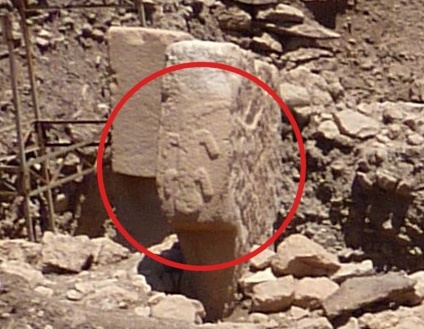
This carving is, with little room for doubt, a very accurate depiction of a Cryptobranchidae salamander . The body proportions of Giant Salamanders are distinct, and all represented here : the extra thick tail (appearing so due to the caudal fin), the rather stubby limbs, and especially the round, near-circular head that, when viewed dorsally, appears larger in diameter than the body is wide. It’s an unmistakably unique appearance."
It’s why Aleister Crowley bought Boleskine Manor on Loch Ness. And why Led Zeppelin’s Jimmy Page bought Crowley’s house.
The same folks have been in charge, and have been practicing the same human sacrifice and ritual cannibalism from Gobekli Tepi right up until now. That’s why the Pope wears a salamander hat:
July 2, 2018 - The Truth about the Pope’s Hat: fish god (Dagon)
Did you know that the fish symbol is a pagan object?
January 11, 2014 - Dagon fish hats and other nonsense
[image]
Where they continue to assiduously use the ruse " fish " as a cover for “salamander”.
Dagon - Wikipedia
Dagon (Phoenician: 𐤃𐤂𐤍, romanized: Dāgūn; Hebrew: דָּגוֹן Dāgōn) or Dagan (Sumerian: 𒀭𒁕𒃶, romanized:da-gan) is an ancient Mesopotamian and ancient Canaanite deity. He appears to have been worshipped as a fertility god in Ebla, Assyria, Ugarit, and among the Amorites.
“A long-standing association with a Canaanite word for "fish" (as in Hebrew: דג, Tib. /dɔːg/), perhaps going back to the Iron Age, has led to an interpretation as a " fish -god”, and the association of “merman” motifs in Assyrian art (such as the “Dagon” relief found by Austen Henry Layard in the 1840s). The god’s name was, however, more likely derived from a word for “grain”, suggesting that he was in origin associated with fertility and agriculture ."
That’s careful obfuscation of the truth - shifting it from what it was originally, “salamander god”, to “fish-god”, then further away still to “fertility god.”
Wikipedia - The god Dagon first appears in extant records about 2500 BC in the Mari texts and in personal Amorite names in which the Mesopotamian gods Ilu (Ēl), Dagan, and Adad are especially common.
At Ebla (Tell Mardikh), from at least 2300 BC, Dagan was the head of the city pantheon comprising some 200 deities and bore the titles BE-DINGIR-DINGIR, " Lord of the gods " and Bekalam, “Lord of the land” . His consort was known only as Belatu, “Lady”. Both were worshipped in a large temple complex called E-Mul, “House of the Star”.
Thus, at Gobekli Tepi, the Neanderthal performed human sacrifices to the Human-Salamander hybrid god, who was the Lord of the gods, the Lord of the Land.
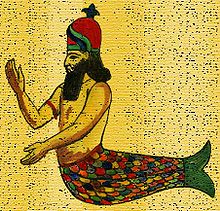
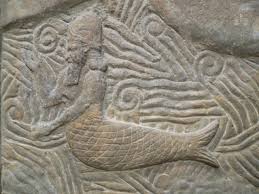
(Images of Dagon)
The same folks have been in charge, from Gobekli Tepi to now, practicing the same ritual sacrifice and cannibalism, and worshipping the same dark gods. Or goddesses:
[image]
[image]
(Salamander with split tail)
THE ORIGINS OF THE SIREN
Of course, Lippincott didn’t draw the Siren from scratch. She’d been around since the very first Starbucks location in 1971. The double-tailed mermaid appears to be a reference to an Italian medieval character Starbucks has claimed as “Norse” –but in any case, the imagery, born from a maritime book , inspired its founders to make her the logo of the Seattle coffee shop.
"[Another Starbucks co-founder] Terry [Heckler] also poured over old marine books until he came up with a logo based on an old sixteenth-century Norse woodcut: a two-tailed mermaid, or siren , encircled by the store’s original name, Starbucks Coffee, Tea, and Spice. That early siren, bare-breasted and Rubenesque, was supposed to be as seductive as coffee itself.’
There’s a problem with this. There’s no such thing as a 16th-century Norse woodcut.
The Norse ceased to exist as such around 1300. Woodcuts didn’t arrive in Europe until about 1400.
Finding a 16th century Norse woodcut would be like finding a photograph of Leonardo da Vinci. Or a selfie of Abraham Lincoln. It just didn’t happen."
More wild obfuscation. Claimed as Norse, but actually from medieval Italy. And later Starbuck’s logo’s obscure the larger image, which is more obfuscation.
November 10, 2015 - The Siren on Your Starbucks Cup Was Born in 7th-Century Italy
“a long-locked, sweetly smiling, twin-tailed mermaid .”
Aug 5, 2016 - She is a depiction of Melusina (also spelt Melusine), a spirit of fresh water in a sacred spring or river
Not in the ocean, as the " maritime book " ruse by the founder of Starbucks suggests. But rather in a sacred spring or river. Like an exclusively-aquatic human-salamander hybrid.
"The legend of Melusine runs deep in French history even to the days of Charlemagne. Several royal houses trace their lineage from Melusine’s family, including Houses of Plantagenet, Angevin, and Anjou.
Many rulers of French descent through history, including Richard (I) the Lionheart, have claimed to be descended from the devil.
As cited by the historian Flori, the chronicler Giraud le Cambrien reports that King Richard was fond of telling a tale that he was a descendant of a countess of Anjou who was in fact the fairy Melusine, concluding that his whole family "came from the devil and would return to the devil ."[1]
[image]
(King Richard I)
Richard was said to be very attractive; his hair was between red and blond, and he was light -eyed with a pale complexion.
“the equally red-haired Richard the Lionheart.”
“Richard was very tall and well-built and had inherited his father’s red hair and grey eyes .”
"He was said to be very tall and handsome with a hair colour something between red and blond. He had blue eyes and a pale complexion . Most scholars believe that he was above average height although his exact height is unknown"
March 2, 2018 - With stocky powerful builds Neanderthals were perfectly adapted to their cold northern climes
September 9, 2019 - Ancient footprints show Neanderthals may have been taller than thought
The red haired, parchment skinned, human sacrificing, ritual cannibalism-practicing, salamander-demon-hybrid King Richard I.
It puts Geico’s mascot in a whole new context:
[image]
2020 - What Kind of Lizard Is The Geico Gecko ? - Reptiles Magazine
Curiously , the Geico gecko never turns his back to the audience to give us a good look at his complete dorsal surface.
He’s the very picture of a human-salamander hybrid, but it is forbidden to openly discuss it, hence the obscured dorsal surface. And the deliberately misleading use of the " lizard " inference in the headline by the “What To Think” Reptile publication.
More salamander propaganda:
December 8, 2018 - Meet Your Kid’s New Favorite Disney Character
A new cute critter invades ‘Frozen 2.’ We know its name .
.
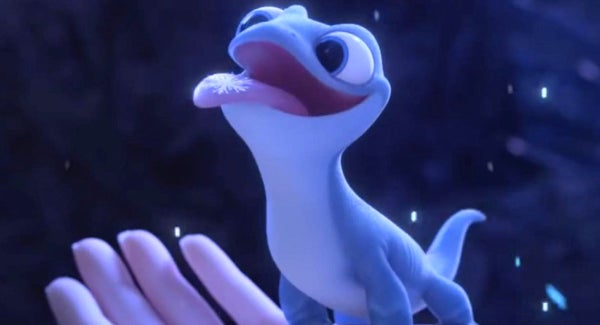
Frozen 2 has arrived and with it, a cute new Disney creature that is almost certainly guaranteed to capture the hearts of children everywhere. It’s an adorable , snow-licking salamander named Bruni, and yeah, you better get ready to buy a Frozen 2 toy version of him for your kids this holiday season. Only thing is, Bruni is almost impossible to find because he’s not present in most of the character merch sets .
Can you see how they omitted the word " salamander " from the headline? And then transfer attention from what kind of critter it is, to its name? You wouldn’t call a salamander a “critter”…that’s more obfuscation.
Wait, the cutest, most adorable character, the one your child loves most, is “impossible to find”, is “missing from the merchandise sets?” No cold blooded Hollywood mogul would stand for such a thing. It’s simply another obfuscation of the human-salamander hybrid.
They want to keep the cuddly, adorable picture in your mind. Unlike this accurate depiction of a human-salamder hybrid from a generational Satanist’s mansion in 16th Century England:
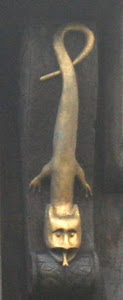
(Salamander carving from Churche’s Mansion, Nantwich, Cheshire, 1577)
I would ask the reader to note the extended tongue in both the Disney and Churche Mansion examples.
Having discussed the Dagon, we must move to the Dogon.
“In Mali, West Africa, lives a tribe of people called the Dogon. The Dogon are believed to be of Egyptian decent and their astronomical lore goes back thousands of years to 3200 BC.”
The Neanderthal invaded Egypt and implemented Set worship there.
“According to their oral traditions, a race people from the Sirius system called the Nommos visited Earth thousands of years ago. The Nommos were ugly, amphibious beings that resembled mermen and mermaids . They also appear in Babylonian, Accadian, and Sumerian myths. The Egyptian Goddess Isis, who is sometimes depicted as a mermaid , is also linked with the star Sirius.”
The Dogon “Nommo” archetype puts the split-tailed “Jesus fish” in a whole new context:
[image][image]
With the “Darwin fish” in actuality a split-tailed salamander :
[image]
They got the salamander into plain sight on car trunks everywhere via a lot, a lot of psychological gymnastics. You’re just not allowed to discuss the subject directly.
They do stuff “in code” like this, figuring the rubes will never notice. And, to be fair, they haven’t, up until now, that is.
It would not surprise me to see that the “Serpent” of Eden was, in fact, a human-salamander hybrid.
But more on that later.
Jeff Miller, Brooklyn, New York, February 13, 2020
If you’d like to be added to the mailing list, or know someone who would be, please send me a note at [email protected]
January 19, 2006 - Human Ears Evolved from Ancient Fish Gills | Live Science
Just like fish , human embryos have gill arches
(Human-salamander hybrid obfuscation. - ed)
October 11, 2013 - Absurd Creature of the Week: The Human- Sized Salamander That Smells Like Pepper
In the rivers of China and Japan dwells a salamander so huge that it positively dwarfs its American cousin, the massive 2.5-foot “snot otter” (which, as it happens, is what they called me in high school). This is the giant salamander, a remarkable human-sized amphibian that has remained almost unchanged for millions of years, hiding on river bottoms and hoovering up fish into its gaping maw. It smells like pepper , it’s astonishingly quick, and it makes noises that sound a bit like a child. A really funny-looking child .
June 28, 2017 - Gene Thieves: Female Salamanders Hijack DNA from Multiple Males
The all-female salamander hybrid Ambystoma has found a simple formula for reproductive success: Mate with multiple males and hijack segments of each partner’s genome to pass on to her offspring.
In the natural world, stealing is a necessary and frequent strategy for survival. Every animal group includes opportunists that snatch others’ fresh kills, pilfer nesting materials or swipe prospective mates from distracted rivals.
But only one type of animal uses thievery at the genetic level for reproduction — an all-female lineage of salamanders in the Ambystoma genus, which contains dozens of species and is widespread across North America. These females mate with multiple males from other Ambystoma species and hijack copies of their partners’ genomes, researchers discovered about a decade ago.
However, scientists recently found that the salamanders weren’t just stealing the males’ genomes. They’re incorporating genetic material from males across multiple species into their own genetic code and using all of them at the same time — a process that is otherwise unheard of in animals , researchers reported in a new study.
July 21, 2018 - Creepy 'Human Fish ’ Can Live 100 Years
The olm, a foot-long salamander nicknamed "the human fish " because of its fleshy skin and tubular shape, is certainly a strange-looking animal. But beneath the surface, they’re even weirder : Olms can live for 100 years , far longer than any other amphibian.
Scientists have no idea why .
“This species raises questions regarding aging processes,” write researchers led by biologist Yann Voituron of France’s Université Claude Bernard in a July 21 Biology Letters study.
The olms studied by Voituron’s team are part of a population established 48 years ago to help conserve the rare amphibian, which is found in caves in Croatia and Slovenia.
(The headline calls a salamander a ‘fish’. That’s blatant obfuscation. It’s repeated again immediately in the body text to drive it into your subconscious. “Human salamander” must not be allowed into the subconscious.
When the project began, the olms were about 10 years old, making them nearly 60 now. Yet they "do not show any time of senescence, " write the researchers, who estimate the olm’s average lifespan to be 69 years, with an upper limit at the century mark.
Living in a stable environment without predators has made it possible for olms to have long lives, but the mechanisms underlying their longevity are unknown . In general, long life correlates with a large body size, but the half-pound salamanders are pipsqueaks compared to the next-longest-lived amphibian, the 50-pound Japanese salamander, which clocks in with a 55-year lifespan.
Voituron’s team thought olms might have extremely slow metabolisms, but they proved metabolically similar to other amphibians, including African bullfrogs and European toads that live for about 40 years.
The researchers also wondered if olms might have special tricks for cleaning up oxygen-free radicals, the DNA-damaging molecules produced when cellular mitochondria turn nutrients into energy. Free-radical accumulation is linked to aging, but the olm’s antioxidant activity is nothing special.
“The olm presents a paradox ,” wrote the researchers. “Neither its basal metabolic rate nor its antioxidant activity, the two most cited mechanisms that should be involved in enhancing lifespan, differ from species with a more reduced lifespan.”
Voituron is now testing whether the olm might have extra-efficient mitochondria that emit fewer free radicals to begin with. “If you manage to produce more energy with less free-radical production, then you can avoid aging and increase lifespan,” he said.
(Mitochondria that differ from those of most other salamanders? Why or how could that possibly take place? - ed)
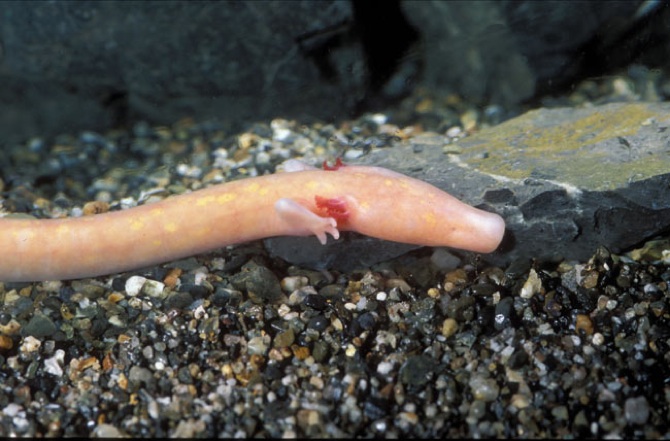

December 2019 - Half- animal , half-human hybrids depicted on oldest discovered cave art
Cave art depicting a hunting scene has been found in Indonesia dated to 44,000 years old, making it the oldest rock art created by humans.
The painting itself is intriguing because it shows a group of figures that represent half- animal , half-human hybrids called therianthropes. The therianthropes are hunting warty pigs and dwarf buffaloes called anoas using spears and ropes.
The abstract figures depict a story, which changes our view of early human cognition, according to a study published Wednesday in the journal Nature. The art could even show the foundation of human spirituality, given the supernatural scene depicted.
2020 - Human gills - Is it true that humans have occasionally been born with gills ?
No , humans have never been born with gills. Without a major controlled change in the human DNA-structure, it is simply an impossibility. Yet, newspapers have reported supposed human gills. What is the source of this confusion?
“BOY HAD FISH GILLS IN HIS NECK”
This headline was not that of some cheap tabloid paper, the type which is as likely to features a phony photograph of a goat-human hybrid as to report Elvis running a hamburger cafe in Tibet . It was a respected Australian regional daily newspaper, The Northern Star (New South Wales, Australia) of October 30, 1993.[1]
The fuss was about a small fragment of cartilage (10-15 millimeters long) which had been removed from the neck of an 11-year-old boy from the town of Tweed Heads, Australia. It was referred to as a “ fish gill,” and as “ fish gill cartilage.” The parents were reported as saying, “The doctor told us that if our son had been a fish he would be able to breath [sic] under water. He said it was a gill—like in a fish .”[2]
The report seemed to directly quote a medical authority as saying that the tissue found in this boy’s neck was hard cartilage “exactly the same as found in the gills of fish .” Little wonder that the boy had experienced “some teasing at school”!
HUMAN CARTILAGE
Knowing that we humans have human (not fish ) DNA and can therefore make only human (not fish ) cartilage, I rang the pathologist referred to in the article, who confirmed that the histology (microscopic appearance) of this cartilage was not in any way distinguishable from ordinary human cartilage.
The whole article seemed to be strongly promoting the mistaken belief that the human embryo, as it develops, goes through the stages of its pre-human evolutionary ancestry. It actually stated that in the first few weeks of life the human fetus “develops six gills.”
[image]
(Note salamander gills and tail - ed)
Few, if any, respected embryologists today accept this belief that the human fetus “repeats its past evolutionary history.” In a major textbook on human development we read that “in the human embryo real gills—branchia—are never formed.” [3]
(A goat-human hybrid is held up as an example of ridicule, when it in fact is the symbol of the generational Satanist author’s Lord Baphomet:

“Fish” is tirelessly put forward in place of “salamander” - ed)
February 6, 2020 - Just like fish , human embryos have gill arches
(Fish put forward in place of “salamander” - ed)
